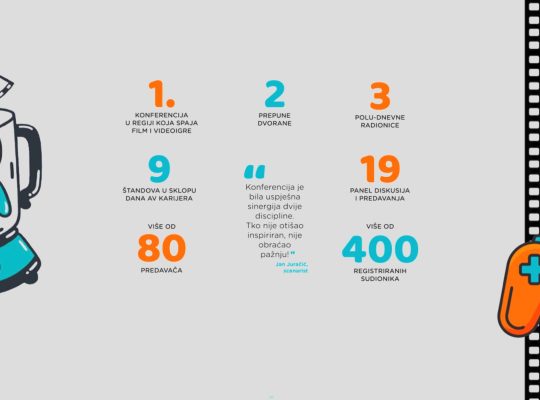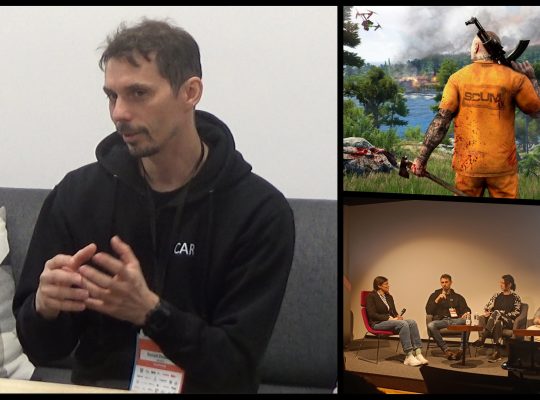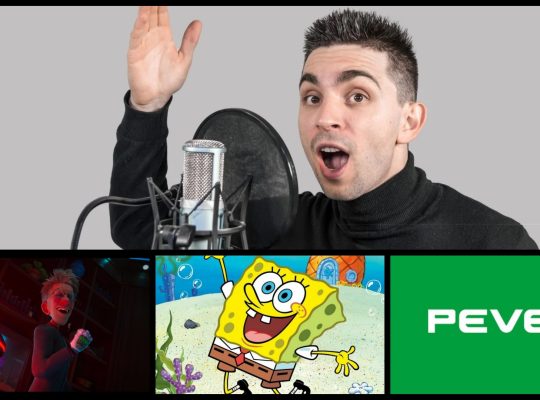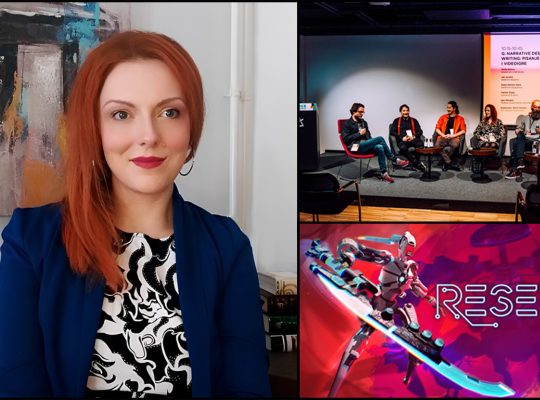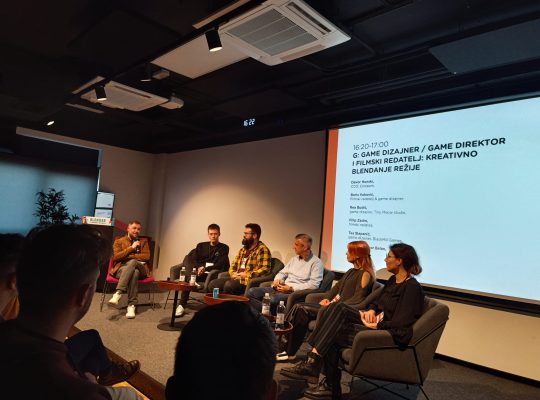At the Blender: Film & Games conference, during the panel Crossmedia and Transmedia: from film to video games and from video games to film, Hrvoje Mitić, director and co-founder of GamesCo. London, an independent consulting company supporting game developers, spoke about the challenges and successes in developing projects that cross the boundaries between different media – films and video games. During the panel, Mitić shared his experiences with two major projects he worked on: Gloomy Eyes and Paws of Fury, which are excellent examples of crossmedia adaptation.
Gloomy Eyes – from VR film to game
One of the projects Mitić worked on was Gloomy Eyes, an experimental VR film from 2019 originally produced by the French studio Arte. This film, narrated by Colin Farrell, offers a unique experience in virtual reality, and Mitić's team got involved in the project with the aim of adapting it into a video game.
Gloomy Eyes managed to convey the specific atmosphere of the film, reminiscent of Tim Burton's style, into the world of video games. "We worked on the project with a small, focused team of 10 to 12 people, and within 15 months we completed a game that contains five hours of gameplay," says Mitić. Although the game's style is somewhat comparable to the indie hit Limbo, Gloomy Eyes retains its unique tone and atmosphere.
Gloomy Eyes: The Game tells the story of Gloomy, a mysterious zombie boy, and Nena, a young girl. Using the unique abilities of Gloomy and Nena, players must solve puzzles and help the heroes in their quest for the return of the sun. They will discover a unique story about loneliness, diversity, and love while solving various puzzles in this dark and poetic narrative game. This title is set to be released in 2025 for PC via Steam.

Paws of Fury – big challenges with a larger project
The second project, Paws of Fury, was much more ambitious, with a larger budget and a more complex production. This film, which according to Mitić started as a series of storyboards back in 2018, featured big stars like Samuel L. Jackson, Ricky Gervais, and Mel Brooks. The film was originally titled Blazing Samurai, inspired by Brooks' 1979 classic, Blazing Saddles and follows the story of a dog who wants to become a samurai in a world of cats, alluding to social issues like racism.
“A fantastic film. I call it triple indie because it’s not quite on the level of Disney animations. The film wasn’t even fully finished, and we had already started working on the game,” recalls Mitić. This project, with a budget of 40 million dollars, found itself in a gray area between major studio productions and independent films, which created additional problems in distribution and production.
Unfortunately, there is still not much information about the game, but Mitić revealed that they are in the final stages of production and that we could soon learn more details about it.

Ključne odluke u razvoju igre
When adapting these films into video games, teams had to make important decisions regarding game mechanics and design, taking into account budget and time constraints. Mitić explained that when taking on the Gloomy Eyes project, there was a clear vision of how to adapt the film into a game, and they had to simplify certain design elements to deliver a quality product within the limitations. "Although we had restrictions, sometimes they are a good thing because they guide us and prevent us from wandering in too many creative directions," Mitić explains.
For the Paws of Fury project, the freedom they had in game development brought many opportunities on one hand, but on the other, also certain difficulties. "Perhaps we rushed in some parts of the project, which later created problems," admits Mitić. Despite this, the team is satisfied with the final result and believes that the game will find its audience.
Each adaptation carries technical, creative, and production challenges, but also an opportunity for innovation and creativity. In the case of Gloomy Eyes and Paws of Fury, Mitić's team managed to retain the key elements of the atmosphere of the original films while adapting those stories to the interactive world of video games. Crossmedia and transmedia projects like these demonstrate that the boundaries between different media are becoming increasingly flexible.



